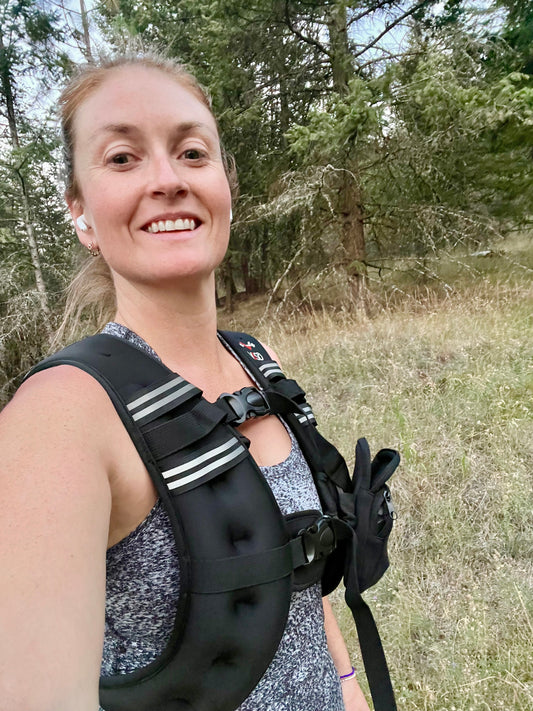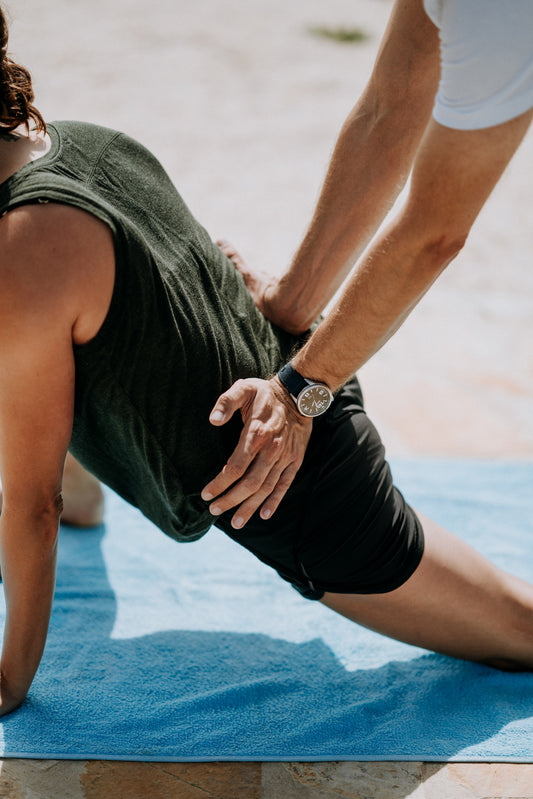If you're dealing with the discomfort of patellofemoral syndrome, you may be wondering what you can do to find relief and regain strength in your knee. Alongside proper medical advice, exercises can play a crucial role in managing this condition. In this blog post, we'll look at three easy and effective exercises that can help alleviate your symptoms. Remember to consult with a healthcare professional before starting any exercise regimen.
Straight Leg Raises:
Straight leg raises are an excellent exercise to strengthen the quadriceps muscles, which provide support and stability to the kneecap. Here's how you can perform this exercise:
- Lie down on your back with one leg straight and the other bent at the knee.
- Tighten the muscles on the front of your thigh of the straight leg.
- Slowly raise the straight leg off the ground until it is parallel to the bent leg.
- Hold this position for a few seconds, then slowly lower your leg back down.
- Repeat the exercise for 10-15 repetitions, and then switch legs.


Remember to keep your movements slow and controlled and keep breathing throughout the exercise. Start with a comfortable number of repetitions and gradually increase as you get stronger.
Wall Squats:
Wall squats, also known as wall sits, are an effective exercise to strengthen the quadriceps, hamstrings, and gluteal muscles. They can help improve overall knee stability and reduce pain. Here's how to perform wall squats:
-
Stand with your back against a wall and your feet shoulder-width apart.
-
Slowly slide your back down the wall, bending your knees until they are at a 90-degree angle (if possible).
-
Hold this position for 10-15 seconds, or as long as you can comfortably manage.
-
Push through your heels and slowly slide back up the wall to the starting position.
-
Repeat this exercise for 10-15 repetitions.

Remember to maintain proper form throughout the exercise. Make sure your knees are aligned with your toes and avoid letting them go past your toes when lowering into the squat position.
Hamstring Stretch:
Tight hamstrings can contribute to patellofemoral syndrome by altering the alignment of the kneecap. Stretching the hamstrings regularly can help alleviate tension and improve knee function. Here's a simple hamstring stretch you can try:
-
Sit on the edge of a chair with your feet flat on the ground.
-
Extend one leg in front of you, keeping it straight.
-
Bend forward at the hips, reaching towards the toes of your straight leg while keeping your back straight.
-
Hold the stretch for 20-30 seconds, feeling a gentle pull in the back of your thigh. Keep breathing.
-
Slowly release and repeat the stretch with the other leg.

Remember not to bounce or force the stretch. Focus on maintaining a steady, gentle stretch throughout the exercise.
Incorporating these three exercises into your routine can help strengthen the muscles around your knee, improve stability, and alleviate the symptoms of patellofemoral syndrome. Remember to start slowly, listen to your body, and consult with a healthcare professional such as a physiotherapist to ensure these exercises are suitable for your specific condition. By consistently practicing these exercises, you can take an active role in managing patellofemoral syndrome and regain strength and comfort in your knee.
If you are dealing with knee pain, our expert movement coaches on Stream TBC have resources to support you - join FREE now!








